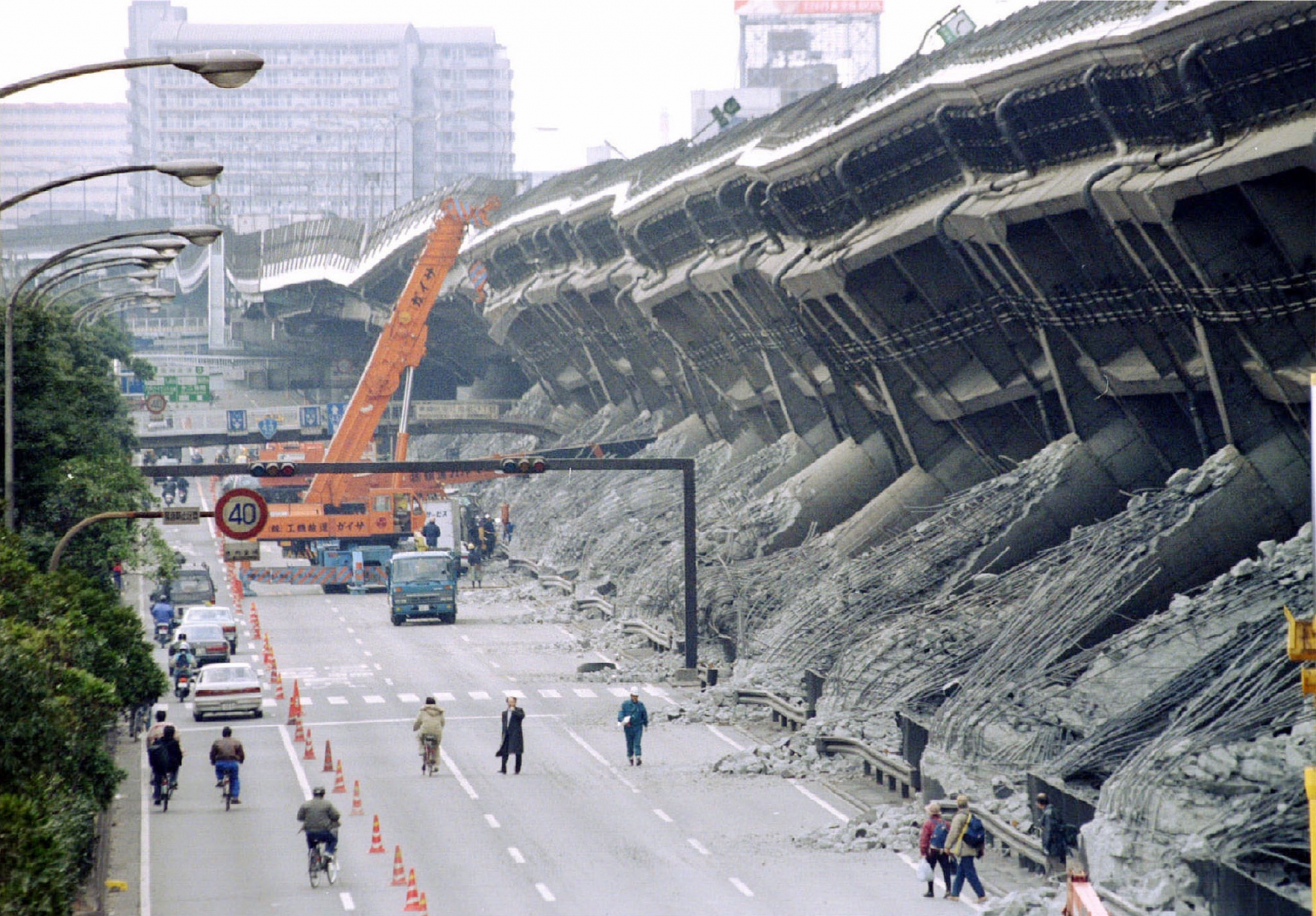Our effort doing some analysis, digging information, made Kobe Earthquake: Unveiling The Strength And Resilience Of A City Rebuilt we put together this Kobe Earthquake: Unveiling The Strength And Resilience Of A City Rebuilt guide to help target audience make the right decision.
FAQ
This FAQ section provides comprehensive answers to commonly asked questions about the Kobe Earthquake, offering a deeper understanding of the event and its aftermath. Kobe Earthquake: Unveiling The Strength And Resilience Of A City Rebuilt

Kobe Bryant’s Family Attends Statue Unveiling at Crypto.com Arena | Us - Source www.usmagazine.com
Question 1: What was the magnitude of the Kobe Earthquake?
The earthquake registered a magnitude of 6.9 on the moment magnitude scale.
Question 2: How many lives were lost in the disaster?
Tragically, the earthquake claimed the lives of 6,434 people, leaving an immeasurable void.
Question 3: What caused such widespread damage to Kobe's infrastructure?
The earthquake's epicenter was located directly beneath the city, amplifying its impact. Furthermore, Kobe's dense urban environment contributed to the extensive damage.
Question 4: How did the city rebuild after such a devastating event?
The people of Kobe demonstrated remarkable resilience, collaborating to rebuild their city with a focus on earthquake preparedness and community well-being.
Question 5: What lessons were learned from the Kobe Earthquake?
The disaster highlighted the importance of strict building codes, early warning systems, and disaster preparedness measures. It also underscored the need for inter-agency collaboration and community engagement.
Question 6: How can we prevent similar tragedies in the future?
By implementing stringent building standards, investing in scientific research, and promoting public awareness, we can mitigate the risks and strengthen our communities against future earthquakes.
The Kobe Earthquake remains a reminder of the devastating power of natural disasters. However, it also serves as a testament to the indomitable spirit of communities that rise from adversity.
For further insights into the Kobe Earthquake, please refer to the comprehensive article: Kobe Earthquake: Unveiling The Strength And Resilience Of A City Rebuilt
Tips
A devastating earthquake struck Kobe, Japan, in 1995, causing widespread destruction and loss of life. However, the city's remarkable recovery and resilience showcase the strength and determination of its people. The following tips, inspired by Kobe's rebuilding efforts, can provide valuable guidance in the face of adversity:
Tip 1: Embrace Community Collaboration
In the aftermath of the earthquake, Kobe residents came together to support each other. They formed community organizations, shared resources, and provided emotional comfort. This sense of unity enabled the city to rebuild faster and stronger.
Tip 2: Leverage Technological Advancements
Kobe's recovery was aided by the adoption of innovative construction techniques and materials. The city implemented seismic-resistant building codes, which have since become a global standard. By embracing technology, Kobe ensured that its infrastructure would withstand future disasters.
Tip 3: Foster Local Economic Development
The earthquake disrupted Kobe's economy. However, the city government and local businesses worked together to create new opportunities. They supported small businesses, attracted foreign investment, and developed new industries. By fostering economic growth, Kobe created jobs and boosted its long-term resilience.
Tip 4: Value Cultural Heritage
The earthquake destroyed many of Kobe's historic buildings. However, the city made preserving its cultural heritage a priority. It reconstructed traditional structures, such as the Ikuta Shrine, and encouraged cultural events to preserve the city's identity and sense of place.
Tip 5: Promote Education and Research
Kobe invested heavily in education and research to prepare for future disasters. The city established the Kobe University Disaster Reduction and Human Renovation Research Center, which conducts research on earthquake engineering and community resilience. By sharing knowledge and best practices, Kobe helps other communities mitigate the impact of natural disasters.
Summary and Conclusion:
The Kobe Earthquake serves as a poignant reminder of the destructive power of nature. However, it also provides inspiring lessons in resilience, collaboration, and innovation. By embracing these principles, communities can prepare for and overcome adversity, building cities that are both safe and thriving.
Kobe Earthquake: Unveiling The Strength And Resilience Of A City Rebuilt
The Great Hanshin-Awaji earthquake of 1995 serves as a poignant reminder of the resilience and indomitable spirit that can emerge from the ashes of devastation. This catastrophic event laid bare the frailty of human structures, yet also unveiled the profound strength and resilience of the human spirit. Various facets of this resilience can be explored through the lens of the keyword "rebuilt," including:
- Engineering advancements: Post-earthquake building codes and innovative engineering techniques showcased resilience in urban planning and construction.
- Community spirit: The disaster forged an unbreakable bond among Kobe's citizens, fostering a sense of collective strength and shared purpose.
- Economic recovery: Kobe's economy rebounded remarkably, demonstrating the city's ability to adapt and thrive despite adversity.
- Cultural revival: Art, music, and cultural events played a crucial role in healing the wounds of the earthquake and restoring a sense of identity.
- International aid: Global support poured in, showcasing the power of human compassion and solidarity in the face of crisis.
- Environmental sustainability: The rebuilding process incorporated principles of environmental sustainability, creating a greener and more resilient city.

Kobe Bryant’s Family Attends Statue Unveiling at Crypto.com Arena | Us - Source www.usmagazine.com
These key aspects exemplify the indomitable will of the people of Kobe to rise above adversity and rebuild their lives and their city. The earthquake not only tested their limits but also revealed their boundless resilience, a testament to the strength of the human spirit and the power of communities to overcome even the most daunting challenges.
Kobe Earthquake: Unveiling The Strength And Resilience Of A City Rebuilt
The Great Hanshin Earthquake, commonly known as the Kobe Earthquake, struck the southern part of Hyōgo Prefecture, Japan, on January 17, 1995. The earthquake caused widespread damage and loss of life, but it also revealed the incredible strength and resilience of the people of Kobe.

Kobe earthquake 20th anniversary: Facts about the devastating 1995 - Source www.ibtimes.co.uk
In the years since the earthquake, Kobe has been rebuilt and has become a model for other cities around the world in terms of disaster preparedness and recovery.
The Kobe Earthquake was a magnitude 6.9 earthquake that struck at 5:46 am local time. The epicenter was located in the northern part of Awaji Island, and the earthquake caused widespread damage in the southern part of Hyōgo Prefecture, including the city of Kobe. The earthquake caused 6,434 deaths and injured 43,792 people. It also caused extensive damage to buildings and infrastructure, with an estimated 100,000 buildings being destroyed or damaged.
The people of Kobe showed incredible strength and resilience in the face of the earthquake. In the immediate aftermath of the earthquake, people worked together to rescue survivors and provide aid to those who had been injured. In the years since the earthquake, the people of Kobe have worked to rebuild their city and create a more resilient community. Kobe has become a model for other cities around the world in terms of disaster preparedness and recovery.
The Kobe Earthquake was a tragedy, but it also revealed the incredible strength and resilience of the people of Kobe. The city has been rebuilt and has become a model for other cities around the world in terms of disaster preparedness and recovery.